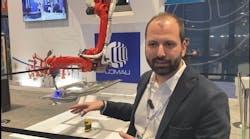Jim Montague is the executive editor for Control. Email him at [email protected].
Though many variations and alternate routes exist, there are two main avenues to machine efficiency and sustainability. You can travel on one, the other or both at the same time.
SEE ALSO: On the Road to Green Machines
The first path is easier because it involves mainly picking the low-hanging fruit of efficiency, which typically aren't too difficult to implement in many machines:
- More efficient motors and drives.
- Right-sized components that avoid overuse of energy, materials and other resources.
- Pneumatics and related devices monitored for leaks and power drains.
- Reduced and simplified wiring with fieldbuses and Ethernet.
- Schedule and turn off machines or production zones when not in use.
The second path is more difficult because it means going after fruit that’s higher up on the sustainability tree. These projects require more thought and effort, as well as earlier collaboration with end users, but the potential payback is huge. They can include:
- Redesigned basic machine movements, spatial configurations, operating formats and operations.
- Servo motors and drives for more accurate, quicker and more complex motion tasks.
- Robots for flexible and integrated production work and product handling.
- Methods to handle end products that reduce raw material use and waste during production.
- Design to enable machine users to produce end products that are more sustainable themselves and allow consumers to live more sustainably, too.
This article is part of the April 2013 cover story "Get Your Machine to a More Efficient Place."




